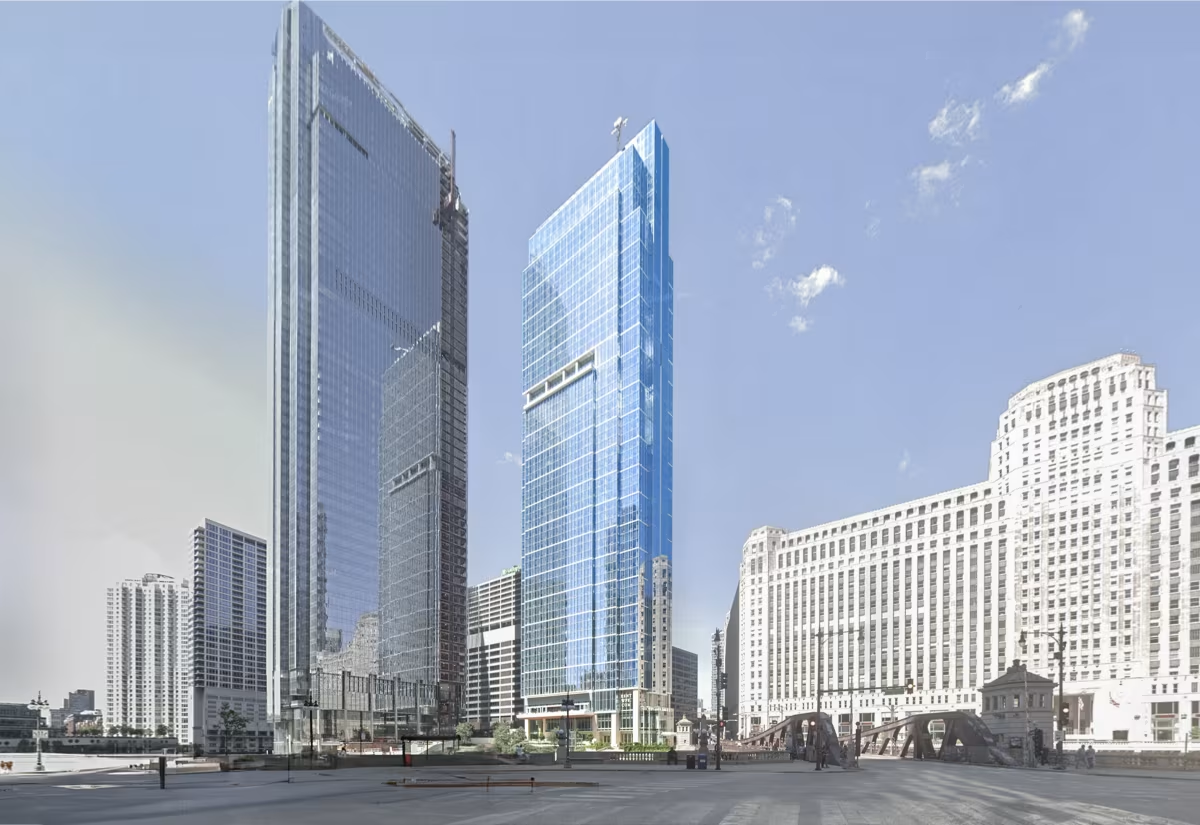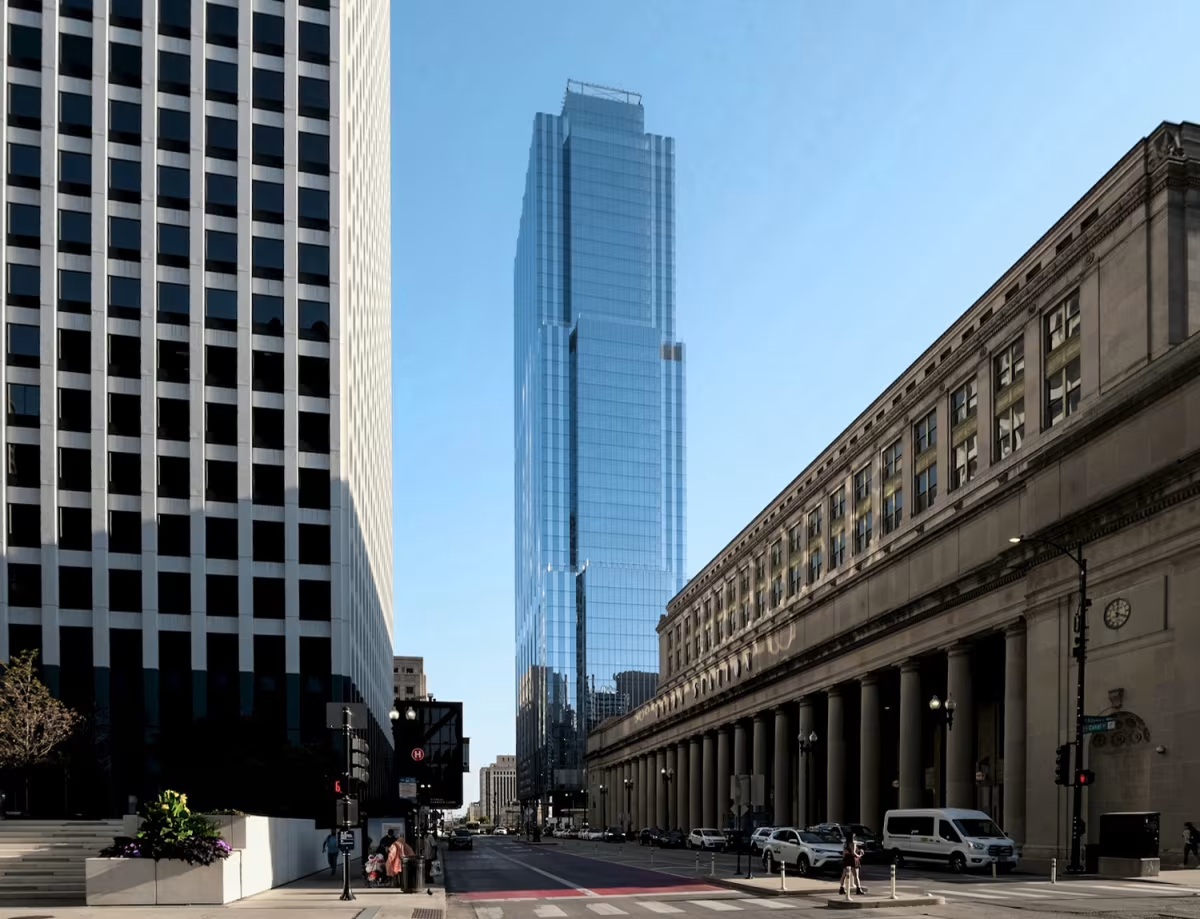Wolf Point East Tower vs BMO Tower


Comparing the Wolf Point East Tower and the BMO Tower is interesting because they both stand in Chicago, IL, and were completed just one year apart, but they were designed by different architects.
This offers a unique glimpse at how rival designers approached projects in the same city during the same era.
Height & Size
These two towers present an interesting contrast in their proportions. The BMO Tower rises higher at 728ft (222m), while the Wolf Point East Tower reaches 666ft (203m). However, the Wolf Point East Tower accommodates more floors with 60 levels above ground, compared to 51 floors in the BMO Tower.
This suggests different approaches to interior space design. The BMO Tower has an average floor-to-floor height of approximately 4.4m, while the Wolf Point East Tower has more compact floors averaging around 3.4m each. The taller building's more generous floor heights might indicate grander interior spaces, higher ceilings, or different programmatic requirements.
These different proportions likely reflect the specific needs each building was designed to serve, whether driven by zoning regulations, client requirements, or the intended use of the spaces within. The contrast shows how architects can achieve different spatial experiences even when working with similar overall building scales.
Architectural Style
Both the Wolf Point East Tower and the BMO Tower were designed in line with the aesthetic conventions of the Contemporary style.
At the time, this style was at the height of its popularity. So both Pelli Clarke Pelli Architects and Goettsch Partners followed what was in many ways expected of them, producing designs that fit comfortably within contemporary architectural norms, rather than breaking with convention.
Uses
The Wolf Point East Tower is primarily residential, while the BMO Tower is primarily commercial.
The Wolf Point East Tower offers 698 residential units.
Both towers provide significant parking capacity, with Wolf Point East Tower offering 198 spaces and the BMO Tower offering 324.
Structure & Facade
Both the Wolf Point East Tower and the BMO Tower rely on a Frame structural system.
A frame structure uses a grid of columns and beams to carry the building's loads. This frees the walls from structural duties, allowing for flexible floor plans and larger windows.
They also employ the same type of facade, a Curtain Wall facade.
A curtain wall is a non-load-bearing facade hung from the structural frame. It is anchored to floor slabs and transfers only its own weight and wind loads, allowing for sleek, glassy exteriors.
| Wolf Point East Tower | BMO Tower | |
|---|---|---|
| Pelli Clarke Pelli Architects | Architect | Goettsch Partners |
| 2012 | Design Ended | 2018 |
| 2017 | Construction Started | 2019 |
| 2020 | Year Completed | 2021 |
| Contemporary | Architectural Style | Contemporary |
| Residential | Current Use | Commercial |
| 60 | Floors Above Ground | 51 |
| 6 | Floors Below Ground | 2 |
| 203 m | Height (m) | 222 m |
| 87,330 m² | Usable Area (m²) | 140,000 m² |
| Frame | Structure Type | Frame |
| Concrete | Vertical Structure Material | Concrete And Steel |
| Concrete | Horizontal Structure Material | Poured Concrete Over Metal Decking |
| No | Facade Structural? | No |
| Gass | Main Facade Material | Glass, Steel |
| Walsh Construction | Main Contractor | Clark Construction |
| Hines | Developer | Riverside Investment & Development |
| Wolff Landscape Architecture, Inc. | Landscape Architect | Wolff Landscape Architecture |
| Cosentini Associates | MEP Engineer | Environmental Systems Design, Inc. |
| Magnusson Klemencic Associates | Structural Engineer | Magnusson Klemencic Associates |
| IL | State | IL |
| Chicago | City | Chicago |
| 313 W. Wolf Point Plaza | Address | 320 South Canal Street |